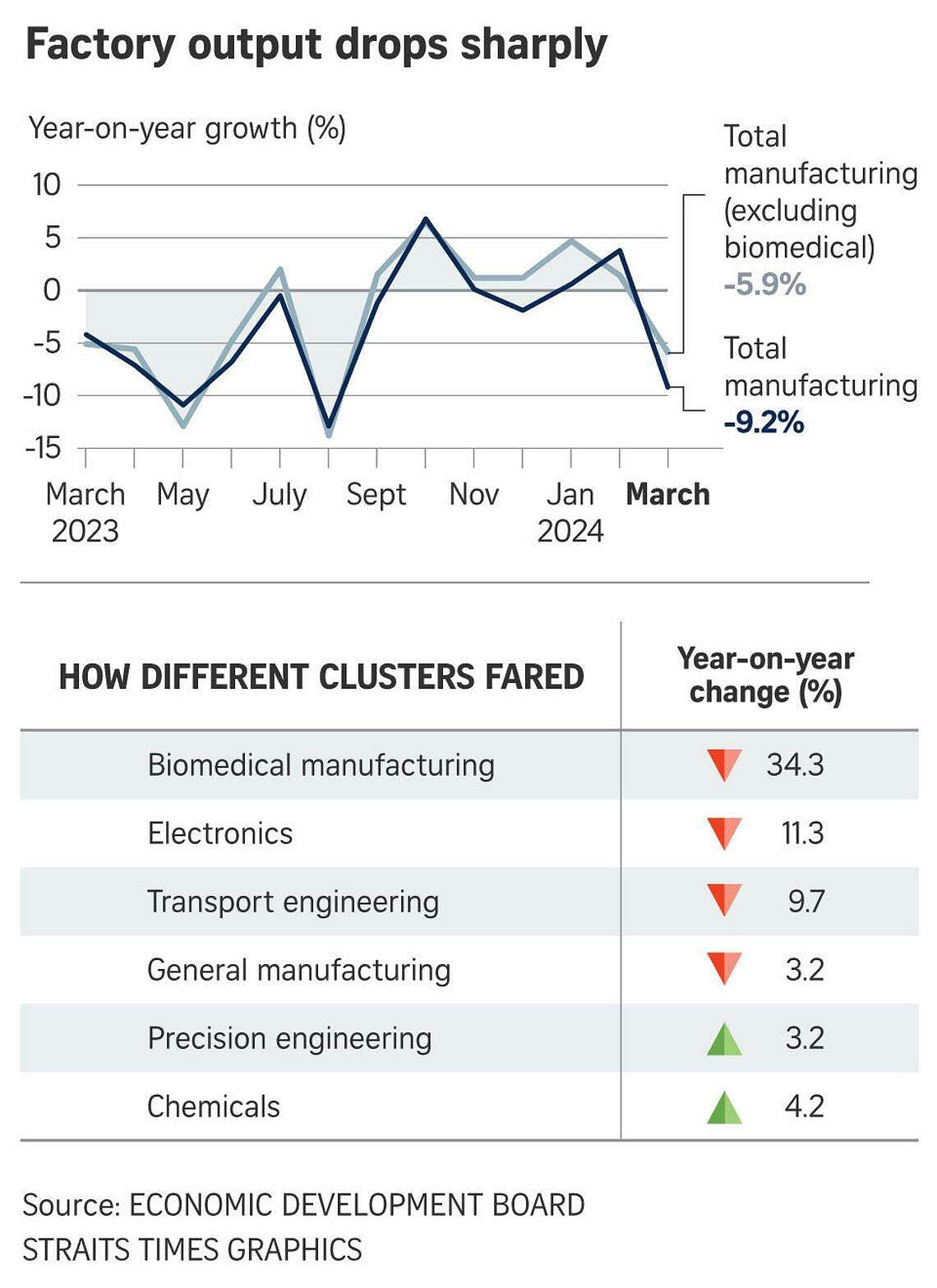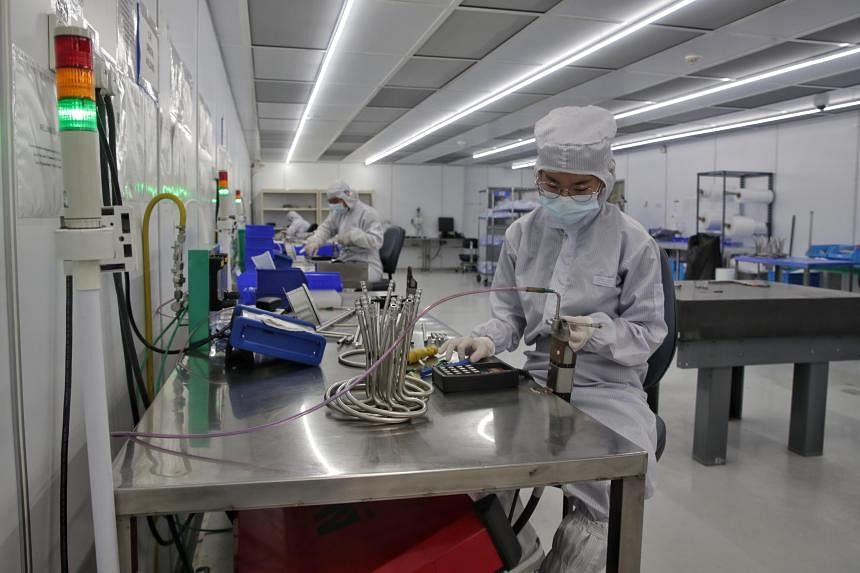SINGAPORE - Singapore’s factory output fell 9.2 per cent year on year in March, reversing from the previous two months’ gains and performing worse than analysts expected.
The drop is the biggest in seven months and far sharper than the 1.5 per cent decline forecast by analysts in a Bloomberg poll.
Excluding the more volatile biomedical industry, production dropped 5.9 per cent, data released by the Economic Development Board (EDB) on April 26 showed.
On a seasonally adjusted month-on-month basis, factory output fell 16 per cent in March. Excluding biomedical manufacturing, output dropped 8.7 per cent.
DBS Bank economist Chua Han Teng said the March data meant that in the first quarter of 2024, manufacturing output contracted by 1.8 per cent year on year, compared with 1.8 per cent year-on-year growth in the fourth quarter of 2023.
He said: “The choppy and uneven factory performance in the first three months of 2024 suggests that the recovery will be gradual, with our expectations still for better manufacturing prospects in 2024 versus 2023’s full-year contraction.”
The electronics cluster performance will be key to Singapore’s manufacturing recovery, Mr Chua noted, adding that improvement in the global electronics cycle and demand remains intact and this should benefit local electronics manufacturers.
Electronics accounts for nearly 48 per cent of total manufacturing output, with semiconductors alone making up about 20 per cent.
Maybank economist Chua Hak Bin said the weaker-than-expected performance in March is consistent with non-oil domestic exports, which contracted in the first quarter.
He said Singapore’s semiconductor production structure may not be as leveraged to the ongoing boom in advanced chips for artificial intelligence servers, compared with peers like Taiwan and South Korea.
This is because Singapore’s semiconductor ecosystem is primarily built around mature nodes (less advanced chips) used for power management, among others, said Maybank’s Dr Chua, who added that the Republic may be more exposed to the slowdown in demand for automotive and industrial chips.
Still, he expects Singapore’s manufacturing and exports to pick up in the coming quarters as the upturn in the electronics cycle broadens beyond artificial intelligence servers.
Dr Chua continues to expect the economy to grow by 2.4 per cent in 2024. “We expect first-quarter final GDP (gross domestic product) growth, to be released in May, to come in around 2.2 per cent, lower than the earlier 2.7 per cent flash estimate, because of the sharp manufacturing contraction in March.”
The EDB data showed the biomedical industry’s output shrank the most in March with a 34.3 per cent plunge, led by the halving of the pharmaceuticals segment.
Pharmaceutical output sank 54.1 per cent, due to a different mix of active ingredients being produced compared with a year ago.
The chemicals industry’s output grew 4.2 per cent while the precision engineering segment expanded 3.2 per cent from a year ago, but these expansions were not enough to offset the declines in the other four clusters.
Electronics output fell 11.3 per cent despite an 18.8 per cent growth in infocomms and consumer electronics. The decline was largely due to the semiconductor industry, where production shrank 14.4 per cent.
Transport engineering output fell 9.7 per cent from the same month a year ago, with 2023 being a strong base year for comparison.

Within transport engineering, output of the aerospace engineering segment fell 7.8 per cent, while that of the marine and offshore engineering segment fell 15.3 per cent. The latter recorded a lower level of activity in the shipyards on the back of lower project milestones met, and weaker production in oil and gas field equipment.
General manufacturing output dipped 3.2 per cent from the year-ago period. This was led by the printing and miscellaneous industries segments as they shrank 3.9 per cent and 13.8 per cent, respectively. The miscellaneous industry posted lower production of construction-related materials.


